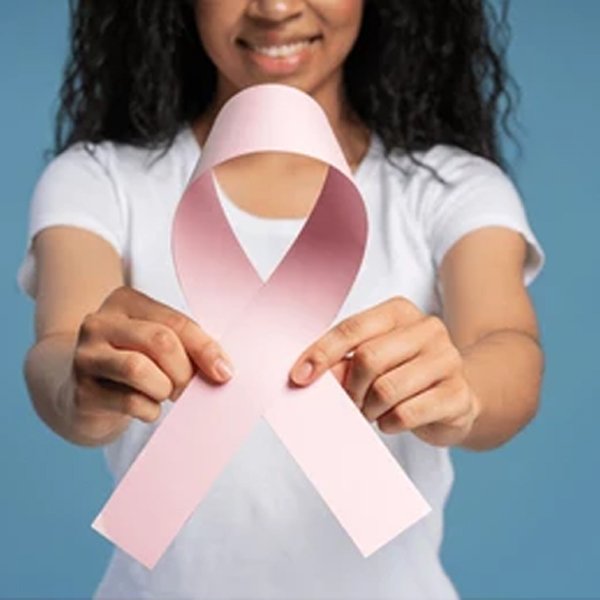Testicular Cancer
Cancer that develops in the testes, often affecting younger men.
- Home
- »
- Cancer Info
- »
- Testicular Cancer

Cancer Treatment
Testicular Cancer
Testicular cancer is found in the testicles, which are situated within the scrotum, a sac-like structure beneath the penis, which holds two testicles on each side.
Testicles or testes are a part of the male reproductive organs which produces male sex hormones (testosterone) and sperm.
Testicular cancer originates in either or both of the testicles. More often, they start in the sperm-producing germ cells of the organ and is relatively rarer compared to other cancer categories.
Symptoms of Testicular Cancer
Symptoms of testicular cancer include the following signs:
- A lump in the testicles
- Enlargement of the testicles
- Abdominal pains
- Pain in the groin
- Fluid collection in the scrotum
- Pain and discomfort
- Back pain
The presence of severe back pain, continuous cough, breathlessness and loss of appetite can be seen in the advanced stages of breast cancer patients along with these symptoms.

Causes of Testicular Cancer:
A few risk factors and causes that are associated with testicular cancers are:
- An undescended testicle: When a male fetus is growing in the womb, the testicles develop outside the scrotal sac and then transcend into the scrotum before birth. In a few cases, the testicles are unable to transcend, increasing the risk of testicular cancer. Although the testes are moved into the scrotal sac surgically does not eliminate the risk and this condition is also called cryptorchidism. However, a large percentage of a male who has testicular cancer do not have a history of undescended testicles.
- Abnormal testicle development: Conditions such as Klinefelter’s syndrome may cause the testicles to develop abnormally, putting the individual at a higher risk of testicular cancer.
- Family History: If an immediate family member has developed cancer, it increases the risk of cancer.
- Age: Although, testicular cancer can occur at any age, but is more commonly seen in men between the ages of 15 and 35.
- Non-modifiable: causes which cannot be changed
- Gender: Womenare at higher risk of acquiring breast cancer and 1% chance of risk in men
- Age:Chances of contracting breast cancer increase with age
- Family history: Only 5-10% of breast cancer is inherited. These cancers are related to sudden changes (mutation) in genes controlling normal cell functioning in our body. BRCA 1 and BRCA 2 are the most common genes associated with breast cancer, the presence of other genes also increases the chance of acquiring breast cancer but with less mutation frequency.
- Estrogen exposure: Early menarche (getting first menses at an early age) and delayed menopause (the time when menses stops) exposes females to estrogen for a prolonged period.
- Dense breast:The breast texture varies in people; having dense breasts and patients with a personal history of breast cancer have an increased risk of contracting cancer.
- Breast lesions: Some pre-cancerous breast diseases like atypical hyperplasia or lobular carcinoma in sit increases the risk of breast cancer
- Radiation exposure: The breast tissues, when exposed to radiation while undergoing therapies for cancer at a young age, can cause breast cancer in future. Although with new radiation therapy technologies radiation exposure can be restricted.
When to see the Doctor?
Pain and discomfort in the scrotum, groin and surrounding areas, without any form of external injury and should be inspected immediately. If you are experiencing any of these signs and symptoms, it is recommended to consult a doctor immediately.
Prevention of Testicular Cancer
There is no particular way to prevent testicular cancer. However, regular screenings, if a person is at high risk, can prevent any complications.
Screening For Testicular Cancer
The screening and diagnosis of testicular cancer can include the following tests and procedures:
- Physical Examination: A complete examination of the body to check for any signs of infection, lumps, lesions, or any unusual signs in the body, especially the scrotum and testicles.
- Medical History: A complete medical history of the patients and the immediate family, their diseases, medications and treatment regimens will also be taken by our specialist.
- Serum tumour marker test: The serum tumour marker test is a blood test to measure the levels of chemicals and hormones released by organs, tissues or cancerous cells in the body. These substances are linked to tumour cells and cancers and are called tumour markers.
The following types of tumour markers can be used to detect testicular cancers:- Alpha-fetoprotein or AFP
- Beta human chorionic gonadotrophin (beta HCG)
- Inguinal orchiectomy: Once the tumour markers are tested, a procedure called Inguinal orchiectomy is performed to remove the testicle. This procedure is a type of biopsy and is done by making a small incision in the groin area. The testicle tissue is then viewed under a microscope to check for cancer cells and their type. This procedure will help determine the future course of action for the treatment of cancer.

Treatment for Testicular Cancer
Based on the screening and diagnosis, which confirms the type, stage and origin of cancer, a single or a combination of treatments is recommended by our specialists.
These treatments will also be based on an individual’s health condition and family medical history. The commonly used treatments are:
Surgery:
Surgery might be suggested to remove either one or both of the testicles, entirely. A few surrounding lymph nodes and healthy tissue may also be removed as a preventive measure to stop the cancer from spreading any further.
Radiation therapy:
Radiation therapy is the use of high-energy rays to eliminate cancerous cells. These radiations can be internal or external. In external radiation, a machine is made to target the radiation directly at the cancerous area.
In internal radiation, a small seed or device filled with radioactive substances is placed in the cancerous area. This allows the radiation to target the cancer cells locally. This treatment is more common in treating seminomas.
Chemotherapy
Chemotherapy is the use of drugs and medicines to destroy cancer cells. It is a type of systemic treatment where the cells that have travelled to other body parts can also be eliminated. Chemotherapy drugs travel through the bloodstream and can be taken orally or intravenously.
Schedule Your Doctor Consultation Online!
Need medical advice? Schedule a visit with our specialists!
Testimonial
Feedback From Our Happy Patients
Insurances We Cover












